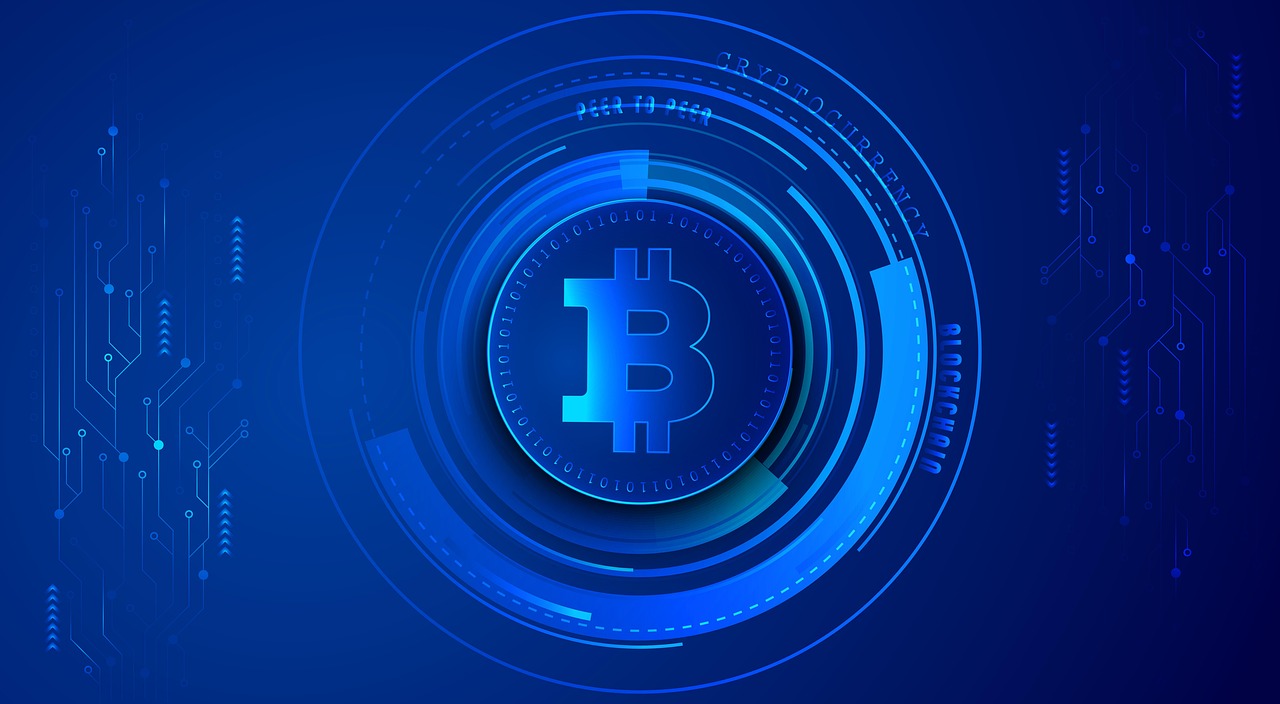2025-01-21 12:01:58
Bitcoin Address: Definition, Types, Examples

A cryptocurrency transaction is impossible without knowing the crypto wallet address. We can draw an analogy with a bank card number: to receive funds, it is enough to give the details to another person and wait for the transfer. In the crypto sphere, everything works the same but without intermediaries: the sender enters your Bitcoin address, the transaction is recorded and confirmed on the blockchain, and you receive the funds.
In this article, we will examine what a wallet address is, what types of combinations exist, how they are created, where to find your credentials, and how to pass them to the sender of the crypto.
Content
What Is a Bitcoin Address?
Each cryptocurrency wallet can have one or more addresses used when performing transactions with different coins and tokens. Each cryptocurrency (Ethereum, Litecoin, Dogecoin) has its specific blockchain and combination format.
A Bitcoin address is a unique identifier designed solely for executing transactions on the Bitcoin network. Attempting to send another cryptocurrency to a BTC address will result in a loss of funds as the transaction will not be processed. Therefore, you should carefully check the details before making transfers.
What Does a Bitcoin Address Look Like?
A Bitcoin wallet address is a long string of upper and lowercase numbers and letters that can include 26-35 characters. Behind this complex combination is hidden an elaborate system that provides security and anonymity of operations. For users’ convenience, the address can be additionally generated in the form of a QR code.
Types of Bitcoin Addresses
There are many formats of BTC addresses, but 4 types are used most often. They are distinguished by the prefix at the beginning of the string (the first 1-4 characters). Let’s take a closer look at their features:
Legacy
It is the very first standard invented by Satoshi Nakamoto. Its full name is Pay-to-Public-Key-Hash (P2PKH). These addresses start with the number “1” and have the following characteristics:
- Structure: include a prefix, a public key, and a checksum (a unique code that ensures that the address has not been accidentally corrupted or altered).
- Universality: addresses are supported by all Bitcoin wallets and applications.
- Disadvantage: large data size, which increases the load on the network and the weight of transactions in QR codes.
High transaction fees for a given Bitcoin wallet address are also a significant disadvantage. Legacy example: 1BvBMSEYstWetqTFn5Au4m4GFg7xJaNVN2
Script
The Pay-to-Script-Hash (P2SH) format was proposed in 2012 to increase the flexibility of Bitcoin addresses. Combinations start with the number “3” and offer additional features:
- Multi-signatures: support complex scripts that require confirmation from multiple parties to transfer funds.
- Commission savings: reduce the load on the network, which decreases costs.
- Commission for the recipient: the user must provide a script — a special data set that matches the hash specified in the address and confirms the rights to access the received BTC. This shifts some of the costs to them.
The peculiarity of this type is that the recipient must pay transaction fees and that more complex transaction scenarios are possible, which is what this Bitcoin address was introduced for. Script example: 3FZbgi29cpjq2GjdwV8eyHuJJnkLtktZc5
SegWit
In 2016, a new format known as SegWit (Segregated Witness) or Bech32 was proposed. Such addresses start with the prefix “bc1” and became the official standard in 2017. Their features include:
- Reduced block size: signatures are removed from the underlying transaction, reducing the data weight.
- Low fees: transaction costs are significantly lower compared to Legacy and P2SH.
- Broad support: most wallets and exchanges use these addresses.
Example of a Bitcoin wallet with a SegWit format address: bc1qxy2kgdygjrsqtzq2n0yrf2493p83kkfjhx0wlh
Taproot
Taproot is the last major update to the Bitcoin protocol, activated in November 2021. The new address format, known as Bech32m or P2TR (Pay-to-Taproot), combines maximum efficiency and security:
- Schnorr signatures: increase privacy and reduce transaction size.
- Lowest fees: Taproot addresses ensure minimum transfer costs.
- Low prevalence: the format is not yet supported by all wallets, which prevents its mass use.
What does the address of a Bitcoin wallet in the Taproot format look like? Example: bc1plrkl9kqz0wtv2nce5p0hlr2jg6z8x9u7hnksdk
Bitcoin Address Generation
Getting a new address is a standard feature of any cryptocurrency wallet. Most of them automatically generate new combinations for users. Constantly updating addresses reduces the risk of hacking or fraudulent activity and increases anonymity.
How is a new combination created? The process involves four steps:
- Private key generation. This is a random large number that gives the owner full control of the funds. It must be kept secret.
- Obtaining the public key. This is the public part of the data generated from the private key and can be safely used to identify transactions.
- Hashing the public key. The process involves two steps, upon completion of which a unique identifier is generated. A prefix and checksum are added to it.
- Encoding. The address is converted into an easy-to-read format. In the process, similar characters, such as “0” (zero) and “O” (letter O), are excluded, which minimizes the probability of input errors.
Examples of Different Cryptocurrency Addresses
The addresses of cryptocurrencies other than Bitcoin have unique features. The main difference is their structure: they may begin not with a number, as in the case of Bitcoin, but with letters or combinations of letters. Let’s look at a few examples to understand the difference better.
Ethereum (ETH)
Ethereum addresses, as well as ERC-20 standard tokens, always start with the “0x” character combination.
Example: 0x4d984e2c64f8e13a81ed53d05d55d5213b7d36fd
Ethereum addresses provide for validation. If a combination is written using uppercase and lowercase letters, it has a checksum embedded in it. This enables the wallet to automatically determine if the address is written correctly. If there are any errors, the wallet will warn the user.
There is no checksum if the address is written completely in upper or lower case. In this case, the wallet will not be able to check if the combination is correct, and the probability of error increases.
Tron (TRC-20)
Addresses of Tron and its tokens of TRC-20 standard start with the “T” letter.
Example: TAb1wN3LFoyzKsjRQrDp7sh4hpWuXaTfse
Litecoin (LTC)
Litecoin Legacy addresses begin with the “L” letter.
Example: LV3Ej5EoA7jdF6ZXC9UEeVRML5cA1JqN1N
Public and Private Keys of Bitcoin Addresses
As mentioned above, Bitcoin addresses are created using two keys:
- Public. This key is the key that can be shared with other people to receive crypto transfers. It can also be used to view information about transactions associated with a particular address.
- Private. This key gives full access to the funds at the associated address. It is used to sign transactions and confirm ownership of the coins.
If someone obtains your private key, they can dispose of your funds. To protect your crypto savings, follow these tips:
- Never share your private key and seed phrase.
- Keep your secret data safe — offline is best.
- Use trusted wallets that guarantee a high level of security.
How to Discover Your Bitcoin Address?
If you want to receive crypto, you will need to tell the sender your Bitcoin address. Where can you find it? It depends on the type of wallet you have. If you are a mobile or browser-based wallet user, you need to follow these steps:
- Open the wallet app and find the “Receive” tab.
- Select the Bitcoin network, after which your address will appear on the screen as a string of characters and a QR code.
- Share the address with the sender.
If you own a hardware wallet, connect the device to your computer or smartphone and then follow the above steps. If you store crypto on an exchange, you need to log in to your account beforehand and then go to the “Deposit” or “Replenish balance” section.
How to Verify a Bitcoin Address?
Bitcoin address verification is a useful feature that allows you to find out information about the wallet’s activity. You can use blockchain explorers, such as blockchain.com or blockchair.com. Just enter a Bitcoin address in the search box, and the service will provide public information about it: balance, receipts history, expenses, transaction details, and data about each transfer (time, amounts, fees, and even transaction hash). It is impossible to get access to funds based on such verification.
Conclusion
Working with Bitcoin addresses is an uncomplicated but important process affecting your transactions’ security and success. Correct use of public and private keys, regular verification of addresses, and compliance with protective measures will help you avoid losses and make your work with cryptocurrency comfortable.
FAQ
The most popular types are Legacy, Script, SegWit, and Taproot.
You need to go to the site of the blockchain explorer and enter the wallet address in the search bar. The service will show the balance, transaction history, and other available information.
You can, but we recommend creating a new address for each transaction to increase privacy and security.
After analyzing the types of Bitcoin addresses, we found out that investors prefer SegWit and Taproot formats due to low fees and high efficiency.
Bitcoin addresses start with “1,” “3,” or “bc1,” while addresses of other cryptocurrencies have distinct prefixes (like “0x” for Ethereum or “T” for Tron).
Want to sell Bitcoin for cash in Kyiv?
Using the services of ObmenAT24, you will be able to make the transaction quickly, anonymously, and safely. We guarantee high reserves and favorable exchange rates.



